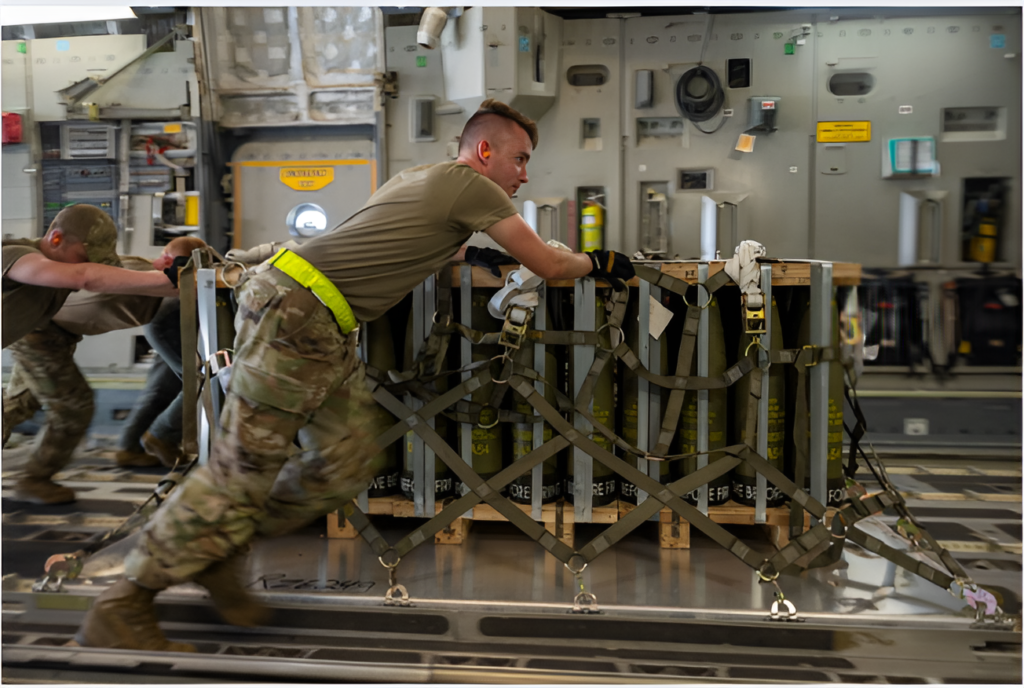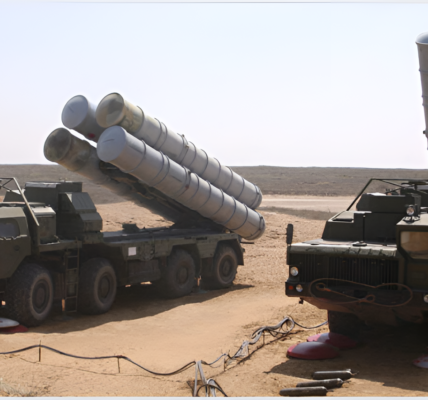
How much security is enough security? During the Cold War, the answer seemed straightforward. The U.S. had one adversary: the Soviet Union. The goal was clear — deter and, if necessary, defeat. But the last three decades have shown that answering this deceptively simple question is anything but easy.
For years, U.S. defense strategy centered on the “two-war construct.” This meant the military should have enough capability and capacity to simultaneously fight two major regional conflicts against adversaries like Iraq and North Korea. However, as American forces have shrunk and adversaries like China and Russia have grown more formidable, the feasibility of maintaining such an expansive military model has diminished. Today, the idea of confronting multiple crises at once has become more of a concern than ever before.
With rising threats from China, Russia, North Korea, Iran, and terrorism, simply fielding a military powerful enough to counter all these threats — let alone two simultaneously — is both cost-prohibitive and strategically dangerous. But could a new approach, influenced by the ongoing war in Ukraine, offer a way out? A model where the U.S. maintains the capability to win one major war directly while supporting a second conflict indirectly — a proxy war — might offer a solution.
The Rise and Fall of the Two-War Force
The concept of fighting multiple wars simultaneously goes back to World War II when the U.S. and its allies fought Germany in Europe and Japan in the Pacific. During the Cold War, the U.S. military was sized to tackle multiple theaters. The force-sizing construct fluctuated over time, from a “one-and-a-half-war” model under President Nixon to a “two major wars” approach under President Reagan. But the fall of the Soviet Union ushered in a new era where the U.S. no longer faced a single peer adversary. Instead, the U.S. had to be prepared for a series of regional threats from nations like North Korea, Iran, and Iraq.
This model of preparing for two simultaneous wars persisted throughout the Clinton, Bush, and Obama administrations. But by the early 2010s, this strategy became increasingly unrealistic. As the U.S. military shrank, the global threats grew more diverse and capable. By the time the U.S. was entangled in prolonged counterinsurgency operations in Iraq and Afghanistan, the military was already stretched thin.
Meanwhile, adversaries like China and Russia were modernizing their military capabilities. China was strengthening its military presence in East Asia, while Russia was aggressively reasserting itself as a regional power. The U.S. was facing a much more complicated, multi-pronged set of threats. The idea of fighting two simultaneous major conflicts began to seem like an insurmountable challenge.
In the last decade, U.S. defense strategies have adjusted. No longer could the U.S. realistically aim to fight two major wars simultaneously. Instead, the focus shifted to defeating one adversary at a time while deterring others from taking advantage of the situation. This one-war strategy became the foundation of U.S. defense thinking under both the Obama and Trump administrations, and it persisted under President Biden’s 2022 National Defense Strategy.
An Increasingly Risky Bet
This shift to a one-war force hinged on the assumption that America’s adversaries were unlikely to collaborate or act simultaneously. But recent developments are challenging that premise. Russia has deepened its military ties with both China and Iran. North Korea has proliferated weapons technology to Iran, while Iran has provided support for Russia’s military efforts in Ukraine. These countries are becoming increasingly intertwined, and the prospect of facing more than one adversary at once is no longer improbable.
The risks of this strategy are growing. A divided adversary landscape that once seemed stable is now much more fluid, and threats are accelerating. Russia is waging war in Ukraine, China is eyeing Taiwan, and North Korea’s missile and nuclear programs are progressing rapidly. The prospect of multiple crises erupting simultaneously is no longer a theoretical concern — it’s a real possibility.
Solving the Simultaneity Problem
Faced with the growing likelihood of multiple simultaneous threats, the U.S. faces several options. One approach would be to limit military commitments, essentially choosing which threats to prioritize. This could mean letting go of conflicts like Ukraine to focus resources on China, for instance. However, this is both impractical and dangerous for a global power like the U.S. which has extensive interests and obligations around the world.
A second option is to continue relying on deterrence. However, deterrence is notoriously difficult to execute successfully, and recent history shows that adversaries, including Russia, have been willing to act despite American warnings. Thus, while deterrence remains the preferred strategy, it must be paired with a backup plan.
The third option would be to build a full-scale two-war force. This would require massive investment — building a military large enough to handle a confrontation with China while simultaneously defending against another adversary. But this would come at a staggering cost, both financially and strategically. As the U.S. shifts focus to long-term competition with China, such a military expansion could risk undermining other areas of power, such as diplomacy, technology, and global influence.
The fourth option, perhaps the most pragmatic, is to follow Ukraine’s example. Through a relatively modest investment, the U.S. has managed to help Ukraine fend off Russia’s invasion, damaging Russia’s military and preventing a worst-case scenario in Eastern Europe. The key to this strategy is providing the necessary military aid and strategic support without direct U.S. involvement in the conflict.
This approach offers several advantages. It reduces the financial burden of direct military engagement while leveraging the resolve and capabilities of a partner nation. While not every country will be able to replicate Ukraine’s resilience, the U.S. could seek out future partners with the will and capacity to take on adversaries with American support. Ukraine might not be a one-off anomaly; it could represent a new model for U.S. defense strategy.
A Return to the Arsenal of Democracy
The idea of the U.S. as the “arsenal of democracy” harkens back to Franklin Roosevelt’s World War II vision of the U.S. as a supplier of military aid to its allies. Today, this concept could offer a new path forward, balancing the need to defend against one major threat while supporting allies in a secondary conflict. It would allow the U.S. to hedge against a multi-front conflict without overburdening its military or defense budget.
Of course, this approach wouldn’t be without risks. It would require a significant expansion of the U.S. defense industrial base, which has struggled to keep up with current munitions demands. But this investment would be far less costly than building a two-war military force. Moreover, it offers the U.S. greater strategic flexibility, allowing it to respond to global challenges without overextending itself.
The time may have come for the U.S. to embrace a new vision of military strategy — one where providing military support to key partners and allies is just as important as maintaining the capacity for direct military engagement. If history has shown us anything, it’s that flexibility and foresight will be essential in navigating the increasingly complex, multi-polar world of the 21st century.
The challenges ahead are significant, but if the U.S. can learn from the ongoing war in Ukraine, it may find a new way forward — one that balances cost, capability, and strategy in the face of a more dangerous and interconnected global landscape.




